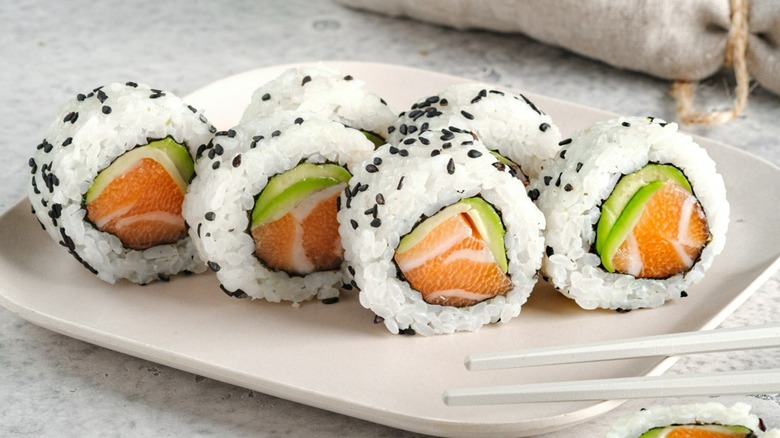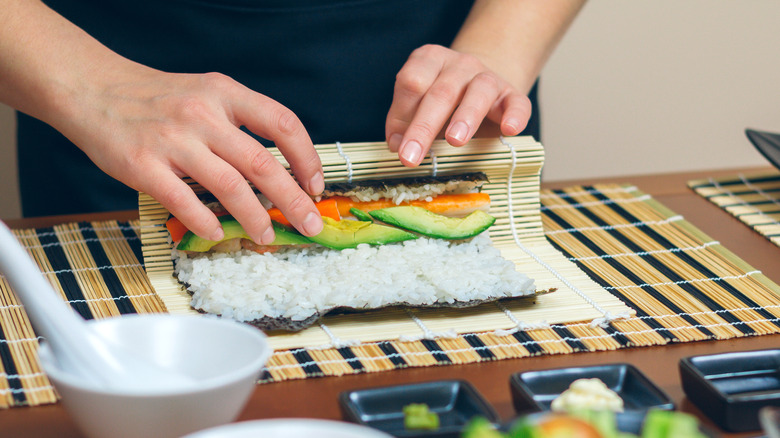No Mat? This Hack Makes Sushi Perfectly With A Clever Substitute
Sushi is a traditional staple food that's widely considered a culinary art form in Japan. Knowing this, perhaps you feel that you should leave the sushi rolling to the professionals. Of all the mistakes people make when preparing homemade sushi, some of the most fundamental are thinking the process has to be overly complicated and believing you need highly specific tools. Thankfully, this isn't the case, and you can easily roll sushi without the help of a bamboo mat, which is typically sought out for how well it shapes sushi and other rolled foods, like omelets.
The only tools you'll need to effectively roll your sushi are a clean towel or dish rag and some cling wrap. Even though there are various reasons why your homemade sushi won't taste as good as restaurant sushi (like access to high-quality seafood), using a towel makes it possible for home chefs to make their own whenever the craving hits, without spending any extra money. Between the two, the only real difference between using a towel and a bamboo mat is the level of structural support. Since a towel is the less-sturdy option, you'll simply have to work a bit slower to ensure you're compressing your sushi roll evenly. Not only can a towel roll sushi just as well as a mat, but your towel also doubles as a food station clean-up tool so you can pivot between food prep and tidying your space quickly.
Rolling sushi with a towel is surprisingly simple
There are a few rules sushi chefs want you to know before diving in, but once you've gathered all your ingredients, the rest is a breeze. The only real food prep consists of making the sticky rice and thinly slicing your veggies and other fillings. Having a small bowl of water nearby can be handy so you can clean your fingers if your rice is ultra-sticky. Alternatively, you can use food-safe plastic gloves. Seaweed specifically made for making sushi, called nori, will hold everything together and help the rice keep its shape.
Begin the rolling process by laying down your towel and placing a piece of cling wrap over it. The sushi's first layer is the seaweed, which is topped with a thin, even layer of rice. Spoon your fish down the center, then surround it with veggies like cucumbers, avocados, carrots, or red peppers. To make uramaki, an inside-out sushi variant in which rice is the outermost layer, the piece of rice-topped seaweed is simply flipped. Once all your ingredients are in place, slowly roll the towel of sushi tightly together, gently applying pressure before removing the plastic wrap. Top with Kewpie mayo, eel sauce, or your preferred umami topping, then slice your roll with a sharp knife.

